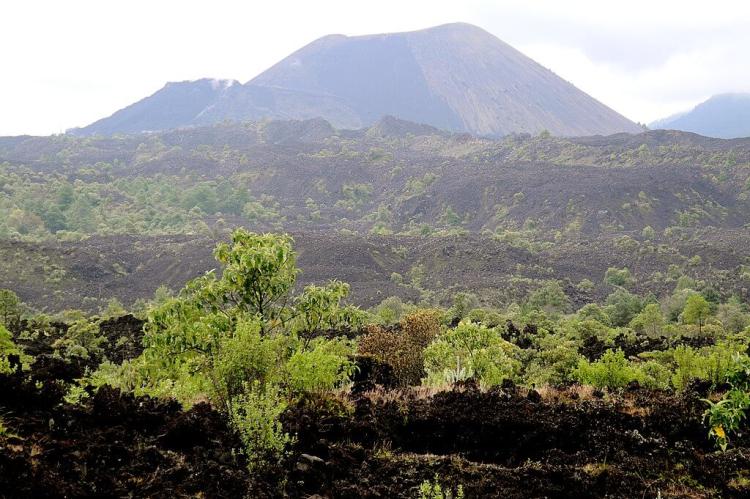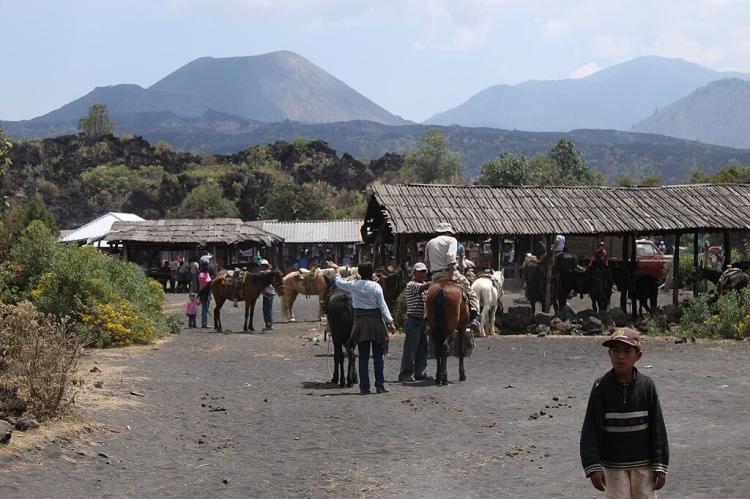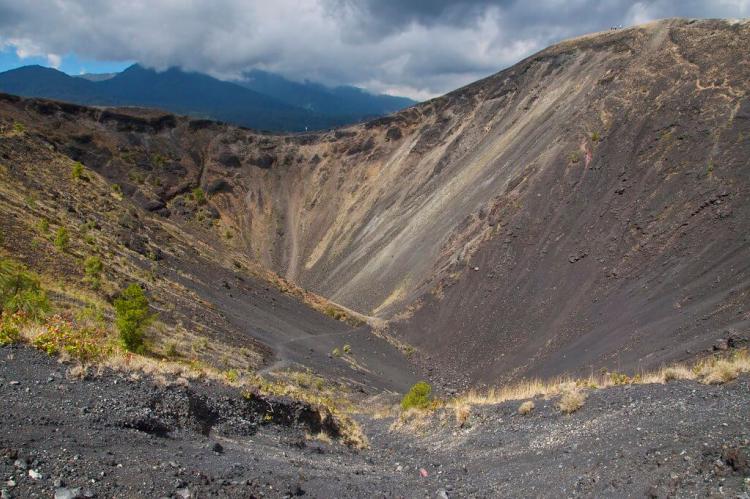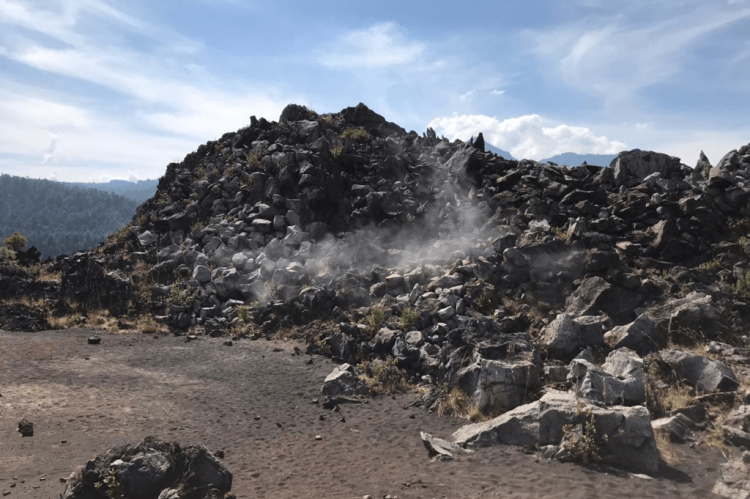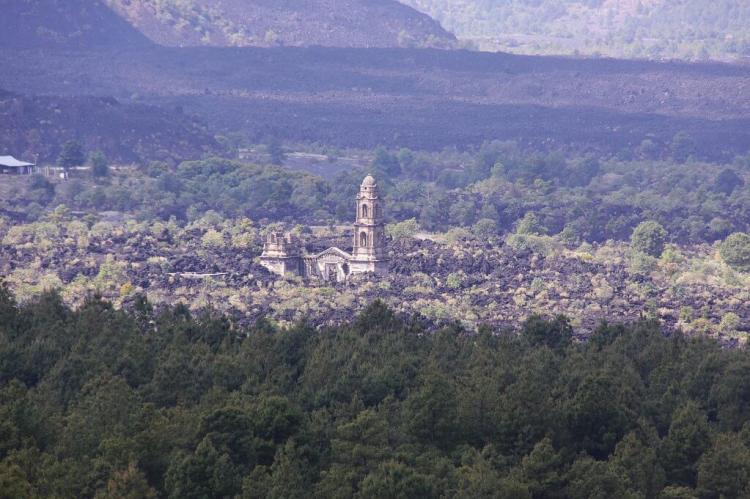Paricutín Volcano: Mexico’s Youngest Volcanic Marvel
The Paricutín Volcano, located in Michoacán, Mexico, is one of the world's youngest and most studied volcanoes. Its sudden emergence in 1943 from a cornfield startled locals and scientists alike, marking a unique opportunity to observe the complete life cycle of a cinder cone volcano.
From Cornfield to Volcano: The Sudden Birth of Paricutín in Michoacán
The Paricutín Volcano, located in Michoacán, Mexico, is one of the world's youngest and most studied volcanoes. Its sudden emergence in 1943 from a cornfield startled locals and scientists alike, marking a unique opportunity to observe the complete life cycle of a cinder cone volcano. Rising to a height of 424 meters (1,391 feet) over nine years of continuous eruption, Paricutín buried villages and farmland under lava and ash, forever altering the landscape. The volcano, now dormant, stands as a testament to the immense geological forces in the region and is a popular tourist destination.
Geological Background: The Michoacán-Guanajuato Volcanic Field
Volcanic Setting
Paricutín is part of the Michoacán-Guanajuato volcanic field, located within the larger Trans-Mexican Volcanic Belt, a highly active region that stretches across central Mexico. This volcanic field is situated along the Pacific Ring of Fire, a zone known for its high tectonic activity and frequent volcanic eruptions. The region has produced numerous volcanoes, although none are as famous as Paricutín due to its recent and well-documented formation.
The Trans-Mexican Volcanic Belt results from the subduction of the Cocos Plate beneath the North American Plate, creating a geological environment ripe for volcanic activity. Over millions of years, this tectonic movement has generated a vast array of volcanoes, lava fields, and calderas. Paricutín, one of the most recent additions to this volcanic landscape, provides invaluable insights into the processes behind volcanic formation.
The 1943 Eruption: A Remarkable Geological Event
Emergence of the Volcano
The sudden birth of Paricutín on February 20, 1943, is a rare event in human history, offering the world the first opportunity to observe the entire life cycle of a volcano from its inception. The eruption was preceded by a series of earthquakes, which rocked the region and signaled the fracturing of the Earth's crust. The event culminated in a fissure opening in the cornfield of local farmer Dionisio Pulido, who witnessed the ground rise and emit smoke, ash, and gas.
Within days, a cinder cone began to form, and soon after, lava flows emerged from the fissure, slowly advancing across the landscape. The eruption's initial phase was characterized by Strombolian activity, a type of eruption marked by frequent bursts of gas, ash, and incandescent rocks. As the cone grew rapidly, reaching 424 meters (1,391 feet) in height, Paricutín became a dominant feature in the region.
Destruction and Impact
The Paricutín eruption lasted an impressive nine years, from 1943 to 1952. Throughout the course of the eruption, lava flows and ashfall led to the abandonment and eventual burial of several villages, including the eponymous village of Paricutín and the nearby town of San Juan Parangaricutiro. The advancing lava destroyed homes, churches, and agricultural fields, displacing entire communities and altering the local economy.
The loss of farmland was particularly devastating to the local population, whose livelihoods depended on agriculture. The eruption buried large swaths of fertile land, forcing the residents to relocate and rebuild their lives elsewhere. Despite the destruction, the eruption of Paricutín provided a rare scientific opportunity to study a cinder cone volcano's formation, growth, and eventual dormancy. This event remains one of the most well-documented volcanic eruptions of the 20th century.
Phases of the Eruption
- Strombolian Phase: The initial phase of the Paricutín eruption was marked by Strombolian activity, during which gas, ash, and molten rocks were explosively ejected from the vent. This activity led to the rapid accumulation of volcanic material around the vent, forming a steadily growing cinder cone.
- Lava Flows: As the eruption progressed, lava began to flow from the volcano at varying rates. These lava flows moved slowly but steadily, engulfing everything in their path, including villages and farmland. These lava flows completely buried the town of Paricutín, while ashfall heavily impacted other areas.
- Volcanic Explosivity Index (VEI): The Paricutín eruption registered a VEI of 3, indicating a moderate eruption. While not as catastrophic as events like the eruption of Krakatoa or Mount St. Helens, the eruption's rapid growth and impact on local communities were significant. The event drew international attention due to its sudden appearance and sustained activity.
Scientific Significance and Legacy
A Living Laboratory
The Paricutín eruption was a landmark event in volcanology, providing a living laboratory for scientists to study the formation and evolution of a cinder cone volcano. Prior to Paricutín, volcanoes of this type had rarely been observed from birth through to their dormant phase, making the eruption a unique opportunity for scientific observation.
Researchers were able to document the entire process, from the initial fissure to the final lava flows. This detailed record has contributed to a greater understanding of how cinder cone volcanoes form and behave. Cinder cones typically have short, explosive life spans, and Paricutín's nine-year eruption allowed scientists to study the various phases of its activity in real-time.
The eruption also highlighted the interaction between tectonic activity and volcanic formation. The Michoacán-Guanajuato volcanic field remains an area of great interest for geologists studying the processes behind volcanic activity within the Pacific Ring of Fire.
Paricutín Today: A Dormant Giant
Dormancy and Tourism
Today, Paricutín stands as a dormant volcano, its cinder cone towering over the landscape of Michoacán. A new role as a tourist destination has replaced the volcano's legacy of destruction. Visitors can hike to the volcano's summit and explore the surrounding lava fields, which still bear the scars of the eruption. The ruins of San Juan Parangaricutiro, including the half-buried church, are a popular attraction, serving as a haunting reminder of the volcano's power.
The surrounding region has since recovered from the devastation, with new vegetation slowly taking root in the volcanic soil. Once displaced by the eruption, the local population has largely adapted to the changed landscape, and agriculture has resumed in areas unaffected by lava flows.
Paricutín remains a powerful symbol of nature's unpredictability and resilience. Its sudden emergence and lasting impact on the region have made it an iconic feature of Mexico's geological heritage.
Conclusion
The Paricutín Volcano's eruption in 1943 stands as one of the most extraordinary geological events of the 20th century. From its sudden birth in a cornfield to its nine-year eruption that buried villages and reshaped the landscape, Paricutín offers an unparalleled opportunity to study the formation of a cinder cone volcano. Now dormant, the volcano has become a symbol of destruction and renewal, drawing visitors worldwide to witness its towering cone and the remnants of the once-thriving communities it displaced. Paricutín remains a testament to the dynamic forces that shape our planet and a reminder of the enduring power of nature.
